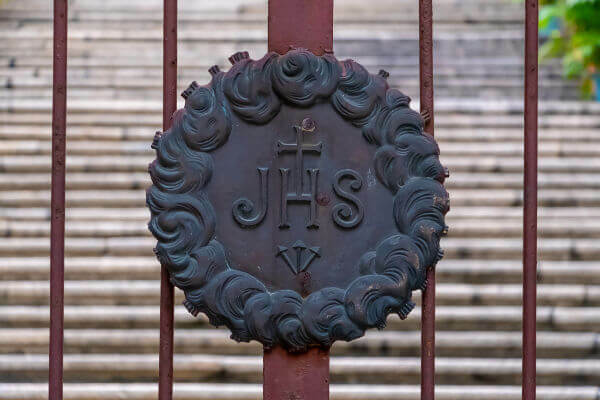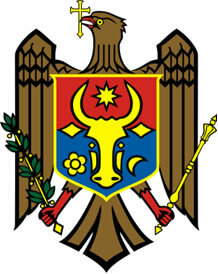O Marquis of Pombal he was one of the most important and controversial figures in Portuguese history. Was Secretary of State of Portugal, between 1750 and 1777, and carried out a series of fundamental reforms in the Kingdom of Portugal that became known as Pombaline Reforms. Many of these had a direct impact on Brazil, at the time a Portuguese colony.
he was called Sebastião José de Carvalho e Melo, but he ended up being known more by his title of nobility than necessarily by his name. In this text, we will preferably refer to the marquis as Oak and Melo, because the main events in his life took place before he received the title of Marquis de Pombal, which took place in 1769.
Also access: Understand why the Dutch invaded Brazil in the 17th century
birth and youth
Sebastião José de Carvalho e Melo was born in Lisbon on the day May 13, 1699. He was the son of Manuel de Carvalho e Ataíde, captain of cavalry and nobleman, and of Teresa Luísa de Mendonça e Melo. Carvalho e Melo, future Marquis of Pombal, was therefore a member of a family that belonged to the gentry from Portugal.
In his youth, he chose to join the law course at the University of Coimbra. Carvalho e Melo's entry into Coimbra was due to the influence of a family member, but soon he dropped out of school. After that, he chose to join the military career and he became a corporal, but he also did not adapt to being a military man and abandoned the profession.
At the age of 23, Carvalho e Melo married D. Teresa de Noronha and Bourbon Mendonça and Almada, a 34-year-old widow, childless, who belonged to the Portuguese high nobility. Carvalho e Melo's marriage to D. Teresa was never accepted by her family, who did not agree with the union with an unknown nobleman.
Acting as an ambassador
Carvalho e Melo joined the Royal Academy of History, in 1733, under the influence of his uncle Paulo de Carvalho. There he wrote texts on the trajectory of Portuguese kings. In addition to studying history, Carvalho e Melo also studied Portuguese legislation. During this period, he lived in Soure, an estate that belonged to his wife's family.
Again by appointment, Carvalho e Melo secured the position of ambassador of Portugal in England, and thus moved toLondon. During the exercise of his function in that country, Carvalho e Melo worked at defense of interests, above all, of Portuguese merchants. While in England, your wife died and left him the goods of his property as an inheritance.
After having his work well evaluated in the English country, he was sent to Vienna, in Austria, in 1745. There he tried to mediate an existing discord between Vienna, the capital of the Holy Roman Empire, and Rome, seat of the Catholic church. In the Austrian capital, he married D. Leonor Ernestina de Daun. After the issue between Vienna and Rome was resolved, Carvalho e Melo claimed adaptation problems with the country's climate and, thus, returned to Portugal.
Reign of D. Joseph I and the Illustrated Reformism

The Pombaline administration took place during the reign of D. Joseph I. (Credits: Boris 15 and Shutterstock)
In 1750, King D. João V and his son was crowned king of Portugal as D. Joseph I. Carvalho e Melo's trajectory as Secretary of State for Portugal began here, again, through a nomination. He was appointed to the position of Secretary of State for Foreign Affairs and War In the same year.
This happened because the wife of the deceased king (D. John V), Mary Anne from Austria, she was a close friend of D. Leonor Ernestina, wife of Carvalho and Melo. Maria Ana da Austria intervened in favor of Carvalho e Melo so that the new king would nominate him for the position of Secretary of State, and thus Carvalho e Melo assumed the position on August 3, 1750.
The appointment of Sebastião José de Carvalho e Melo to the position of Secretary of State in Portugal took place in the context of Illustrated Reformism, also known as Despotism Enlightened. The Illustrated Reformism was basically a reform movement carried out by Portugal, with the aim of fortify the kingdom.
There was a desire to implement these reforms in Portugal since the end of the Iberian Union, when Portuguese managers identified the kingdom's weaknesses. Illustrated Reformism, as the name suggests, was inspired by the concepts of Enlightenment and applied them to the management of the kingdom, aiming at its strengthening.
Illustrated Reformism aimed to bring about changes in areas such as Economics, Politics, management of overseas territories of Portugal, among others. During this movement, during Carvalho e Melo's administration, there were also attempts to carry out the concentration of power in the figures of the king, D. José I, and Carvalho e Melo, secretary of state.
Great goals were pursued during the Illustrated Reformism, especially during Carvalho e Melo's administration. Some of them were: the need to reduce the weaknesses of Portuguese trade in relation to England; the increase in the colony's revenue and the improvement of control over it; improving the quality of items produced in the colony; the repression of the smuggling of goods; and the improvement of colonial administration.
Acting as secretary of state
Carvalho e Melo served as secretary of state between 1750 and 1777, and during this period he held the following positions:
Secretary of State for Foreign Affairs and War (1750-1755);
Secretary of State for Interior Affairs of the Kingdom (1755-1777).
A series of landmark events took place during the period that Carvalho e Melo was at the head of the Portuguese State. The first of them was against England, as he considered that the intense action of that country in the transport of Portuguese goods was harmful to the Portuguese economy, and thus decreed the nationalization of Portuguese colonial trade.
Another remarkable event in Carvalho e Melo's administration was the earthquake which reached the city of Lisbon in 1755. On that occasion, a tremor hit the Portuguese city and caused a tsunami with gigantic waves that razed it. The combination of earthquake and tsunami resulted in the destruction of much of it and the death of about 12 thousand people|1| (although there are statistics that indicate a higher death toll).

The earthquake that hit Lisbon in 1755 was a watershed in the Pombaline administration.
In this event, Carvalho e Melo became, in fact, a powerful and influential person in Portugal, because the Lisbon reconstruction was accomplished by the initiatives taken by him. The project to rebuild the destroyed buildings was carefully controlled by Carvalho and Melo, and measures to prevent epidemics from happening were also taken.
In addition, actions were taken against the withdrawals and the citizen escape, and the price of items needed for reconstruction was controlled. Carvalho e Melo redefined a new architectural model for Lisbon which was paid with the gold taken from Minas Gerais. The action of the Portuguese Secretary of State was considered the first emergency response carried out by the government in the history of Portugal.|2|
In 1758, Carvalho e Melo had to deal with the regicide attempt of D. Joseph I. Investigations, at the time carried out by the Portuguese secretary, concluded that the attempted assassination of the king was carried out by members of the Tavora and by DukeinAveiro. The main people involved in the crime were condemned to death, and Carvalho e Melo showed no mercy to those involved, who were executed in a public ritual similar to the one dedicated to Tiradentes.
Also access: Understand the difference between tsunami and tsunami
Relationship with Brazil
Sebastião by José Carvalho e Melo never been to Brazil, but his actions had immediate consequences in the country, since the colony administration it was his assignment. So there were a number of key steps he took, some of which we'll highlight below.
In 1755, during the height of the crisis caused by the Lisbon earthquake, the marquis promoted the tax increase charged on mining zone of Minas Gerais. The intention, clearly, was to be able to finance the reconstruction of the Portuguese capital. Another prominent measure was taken in 1763, when the Brazil's capital was transferred from Salvador to the Rio de Janeiro.
The change happened, firstly, because Rio de Janeiro was closer to mining zones than Savior. In addition, it was a place that registered intense economic growth and was closer to the regions in the south of the country, due to territorial disputes with Spain, mainly for the Colony of Sacramento.
In 1757, he took care of definitively abolish the enslavement of indigenous peoples, because he wanted to integrate these populations to the Portuguese interests of securing border territories disputed with the Spanish and the French. Furthermore, transferred responsibility for the education of settlers from the Church to the Portuguese State, and created a tax to finance the education of the colonists.
Also access: Understand the role played by the Society of Jesus in the Counter-Reformation
Relationship with the Jesuits

In 1759, the Jesuits were expelled from Portugal and its colonies. (Image credits: Chintung Lee and Shutterstock)
Another great chapter in Carvalho e Melo's trajectory at the head of the Portuguese administration was the clash with the Jesuits. In 1759 he decreed the expulsion of those from Portugal and of its colonies, and all the goods andproperties of the Society of Jesus were confiscated for the government. Later, these properties were auctioned.
Carvalho e Melo's conflict with the Jesuits is explained by the objective of centralization of power promoted by him during his administration. In their goals, Carvalho e Melo didn't accept the existence of a religious order powerful and rich whatever autonomous and that it had interests different from the Portuguese State.
The expulsion of the Jesuits also took place in Spain and its colonies. In 1767 and 1773, the order was expelled from the Catholic Church by order of Pope Clement XIV. This was only restored in 1814.
decay and death
Throughout his political trajectory, the Marquês de Pombal acquired numerous enemies, especially among the Portuguese nobility. The daughter of King D. Joseph I, D. Maria, did not sympathize with the figure of the administrator of Portugal. After his father died, he tried to deprive the Marquis of Pombal of his power.
In addition, Pombal was forced to leave Lisbon and remain confined to his residence in Pombal. Was sued for corruption and forgiven by the queen, but died in the ostracism and isolated, at the age of 82, in 1782.
Titles
Sebastião José de Carvalho e Melo had two titles throughout his life, namely:
Count of Oeiras, obtained in 1759;
Marquis of Pombal, obtained in 1769.
|1| LOURENÇO, Luciano and SANTOS, Angela. Introduction. In.: LOURENÇO, Luciano and SANTOS, Ângela (coords.) Lisbon Earthquake of 1755: what have we learned 260 years later? To access, click on here.
|2| AQUINO, Júlio Groppa and VAL, Gisela Maria do. The great Lisbon earthquake and the emergence of a new socio-educational order. To access, click on here.
By Daniel Neves
Graduated in History
Source: Brazil School - https://brasilescola.uol.com.br/biografia/marques-pombal.htm


